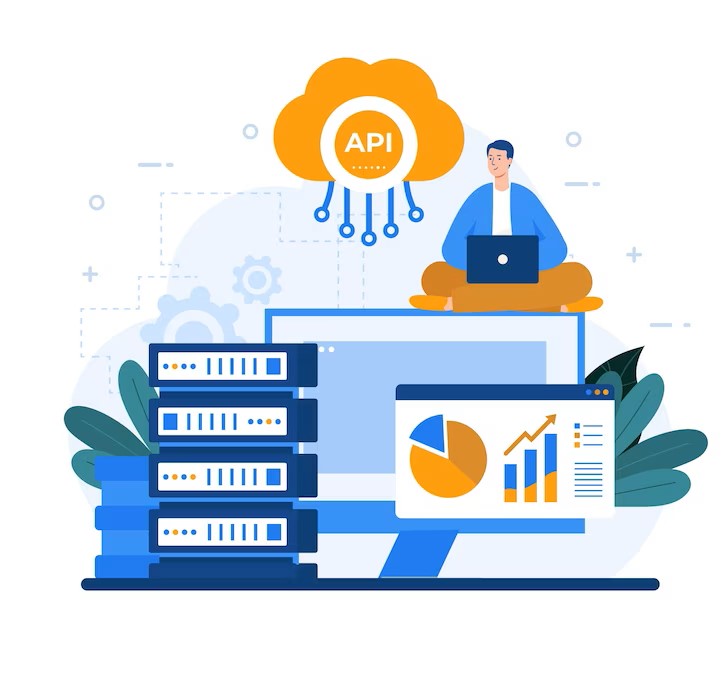Discover how APIs work and why they are crucial in modern software development. This SEO-friendly blog post will provide you with a comprehensive understanding of APIs and their significance in enabling seamless communication between different software applications.
Introduction
In today’s interconnected digital world, software applications need to communicate and interact with each other to provide seamless user experiences and enable complex functionalities. APIs play a crucial role in facilitating this communication, allowing software applications to share data, functionality, and services. In this blog post, we will demystify the concept of APIs and provide you with a comprehensive understanding of how APIs work and their importance in modern software development.
Understanding APIs
At its core, an API (Application Programming Interface) is a set of rules and protocols that enable communication between different software applications. APIs define how different software components can interact with each other, specifying the format and structure of data that can be exchanged, the methods and operations that can be performed, and the rules for authentication and authorization.
APIs act as intermediaries that allow different software applications to communicate and share data and functionality. APIs can be categorized into different types, such as web APIs, database APIs, operating system APIs, and more. Web APIs, such as RESTful APIs, are widely used in modern software development for enabling communication between web applications.
How APIs Work
APIs work based on a client-server model, where the client, typically a software application or a user interface, sends requests to the server, which processes the requests and returns responses. The client and server communicate using a predefined set of rules and protocols defined by the API.
The API defines the structure and format of the data that can be sent and received, typically using standard data formats such as JSON (JavaScript Object Notation) or XML (eXtensible Markup Language). APIs also specify the methods or operations that can be performed, such as GET, POST, PUT, DELETE, etc., which represent different actions that can be taken on the data.
When a client sends a request to the API, it includes the necessary information, such as the endpoint or URL of the API, the method to be performed, and any required parameters or data. The server processes the request, performs the specified operation, and returns a response, which can include the requested data or information about the status of the operation.
Importance of APIs in Modern Software Development
APIs play a crucial role in modern software development for several reasons
- Integration: APIs enable integration between different software applications, allowing them to communicate and share data and functionality. This enables developers to leverage existing functionalities and services provided by other applications, saving time and effort in building new functionalities from scratch.
- Scalability: APIs allow software applications to scale and adapt to changing requirements. APIs provide a flexible and modular approach to building software, where different components can be developed independently and updated without affecting the entire system.
- Reusability: APIs promote reusability of code and functionalities, as they allow developers to create modular and loosely coupled components that can be easily reused in different applications. This reduces duplication of efforts and promotes code maintainability.
- Innovation: APIs enable innovation by providing a foundation for developers to build upon and create new applications and functionalities. APIs allow developers to experiment, iterate, and create new use cases and applications by leveraging existing functionalities and services.
“APIs in Action: Real-World Examples of How APIs are Used Across Industries”
APIs are utilized in a wide range of applications across various industries. Here are some examples of how APIs are commonly used:
- Social Media Integration: Social media platforms such as Facebook, Twitter, and Instagram provide APIs that allow developers to integrate their applications with these platforms. This enables functionalities such as posting content, retrieving user data, and managing social media accounts from within third-party applications.
- Payment Gateway Integration: Payment gateways like PayPal, Stripe, and Braintree offer APIs that allow developers to integrate online payment processing into their applications. This enables businesses to accept online payments securely and efficiently, providing a seamless checkout experience for their customers.
- Mapping and Geolocation Services: Mapping and geolocation APIs, such as Google Maps, Mapbox, and OpenStreetMap, provide developers with access to mapping and geolocation functionalities. This allows applications to display maps, calculate routes, and provide location-based services such as geofencing and location tracking.
- Weather Data: Weather APIs, such as OpenWeatherMap and Weather API, provide real-time weather data and forecasts that can be integrated into applications, such as weather apps, travel apps, and transportation apps, to provide users with up-to-date weather information.
- E-commerce Integration: E-commerce platforms like Shopify, WooCommerce, and Amazon Marketplace provide APIs that allow developers to integrate their applications with these platforms. This enables functionalities such as product listing, order management, and inventory management from within third-party applications.
- Messaging and Communication: Messaging and communication APIs, such as Twilio, WhatsApp, and Firebase Cloud Messaging (FCM), provide developers with the ability to send and receive messages, notifications, and alerts in their applications. This is commonly used in applications such as chat apps, customer support systems, and notification services.
- Cloud Services: Cloud service providers like Amazon Web Services (AWS), Microsoft Azure, and Google Cloud Platform provide APIs that allow developers to interact with their cloud infrastructure and services. This includes functionalities such as storage, compute, networking, and machine learning, enabling developers to build scalable and robust cloud-based applications.
Conclusion
APIs are a fundamental concept in modern software development, enabling seamless communication and integration between different software applications. They provide a standardized way for applications to share data, functionality, and services, promoting scalability, reusability, and innovation in software development. APIs allow developers to build modular and interoperable applications, reducing development time and effort, and promoting code maintainability.

